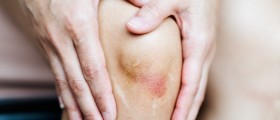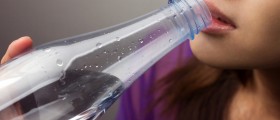
Clinical Characteristics of Juvenile Arthritis
In children suffering from juvenile arthritis the affected joints become painful and stiff. Such symptoms must last at least for 6 weeks and in case the doctor rules out other potential causes of the disease, it is most definitely that a child is suffering from juvenile arthritis. Symptoms and signs of joint inflammation develop either gradually or, sometimes, abruptly. Additional problems include fatigue, weight loss and some patients develop uveitis and photophobia.
In case of systemic form of the disease apart from changes that affect joints, the affected child suffers from spiking fevers accompanied by a salmon-pink rash distributed predominantly on the trunk and extremities. Such children also complain about generalized muscle pain and their liver and spleen may enlarge. Lymphadenopathy (enlargement of lymph nodes) may occur as well. And finally, systemic form of the disease potentially leads to pleuritis, pericarditis and /or myocarditis.
Pauciarticular arthritis generally affects large joints such as the knee, ankle or the wrist. It affects joints symmetrically. In case of pauciarticular chronic juvenile sacroiliitis the inflammation affects the hip, sacroiliac joint, heel, foot and the Achilles tendon. This form of the disease is also responsible for ankylosing spondylitis.
Polyarticular form of juvenile arthritis affects equally large and small joints. They are affected symmetrically and either suddenly or gradually. In many cases inflammation affects the cervical spine potentially resulting in atlantoaxial subluxation.
Treatment for Juvenile Arthritis
Treatment starts immediately after the diagnosis is confirmed. Non-medicamentous treatments include physiotherapy and occupational therapy. Patients can additionally benefit from hydrotherapy. Such children should have plenty of support from their families.
Medications used for treatment of juvenile arthritis include non-steroidal anti-inflammatory drugs, analgesics, disease-modifying anti-rheumatic drugs and cytokine modulators. Methotrexate and sulfasalazine may be used as well. Adalimumab and infliximab belong to a group of tumor necrosis factor inhibitors and may be administered, but treatment must be closely monitored due to many side effects associated with these drugs. And finally, two more medicamentous treatments include intravenous gamma globulin and corticosteroids. The doctor will decide which of the mentioned medications a child should take, monitor the effects and also pay close attention to all potential side effects of treatment.

















Your thoughts on this
Loading...